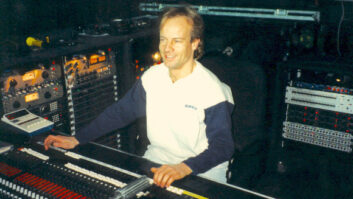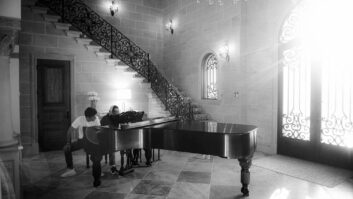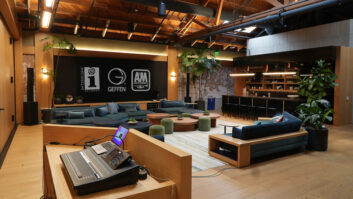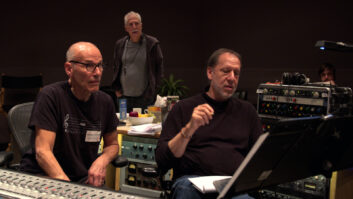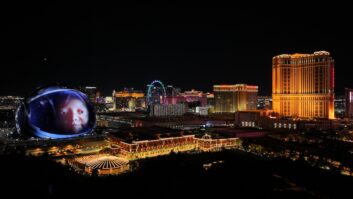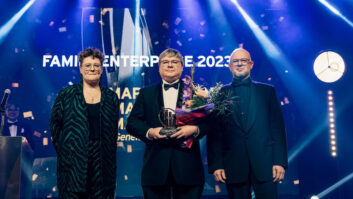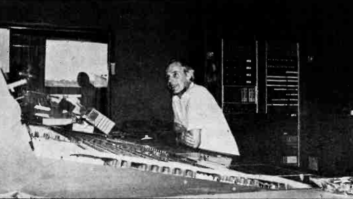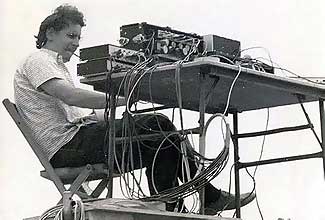
Hanley mixing front of house at Woodstock 1969 using Shure boards.
Photo: Hanley Crew Member David Marks
Celebrating its 40th anniversary, the 1969 Woodstock Music and Art Fair would have sounded a lot different if it weren’t for sound engineer Bill Hanley, who designed and ran the sound system for the three-day festival. At last year’s AES convention, Hanley described his sound system design. With this month’s AES show and the anniversary of the music festival, we thought it would be fun to take a peek through the way-back machine. Information courtesy
www.billhanley.org.
— Sarah Benzuly
“We built our front-of-house mixing station on a platform about 75 feet from the stage so we could see the stage and hear the mix through the stage-left lower speaker cluster. On the stage, we used custom microphones I had built from Shure factory parts. They closely resembled what Shure Brothers would soon sell as the popular Shure SM58, the most noticeable difference being that mine had a brushed-chrome finish like the older Shure ‘bird cage’ mics.
“Under the stage we had our McIntosh amplifiers, both transistorized and tube models. Transistors were new and a bit risky, but we needed all the power we could get.
“In a nearby trailer, we had two 8-track Scully recorders catching the show. Those are the tapes everyone knows through the album and for Martin Scorcsese’s Woodstock movie, which was nominated for an Academy Award.
“Because most of the audience would be perched high on the hill, I decided to build two speaker towers, each with two levels of speaker clusters: one high, about 70 feet to reach the middle and top of the hill, and one much lower for the near audience.
“This geometry sent the music directly to everyone’s ears without causing any backslap because all the grass and soil…and the bodies of half-a-million fans would absorb the sound, eliminating the unwanted resonances and reflections that we have to deal with indoors.”
